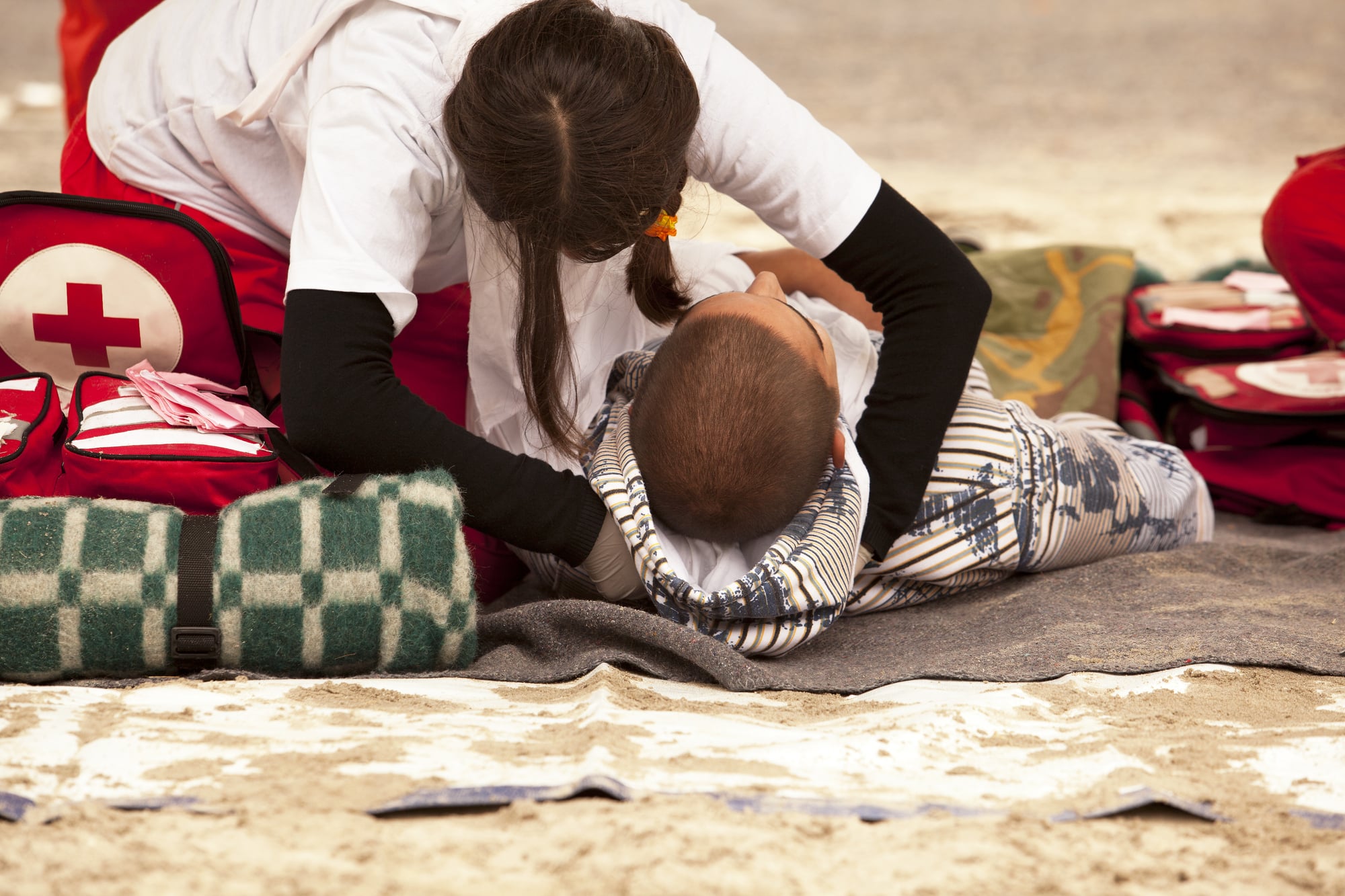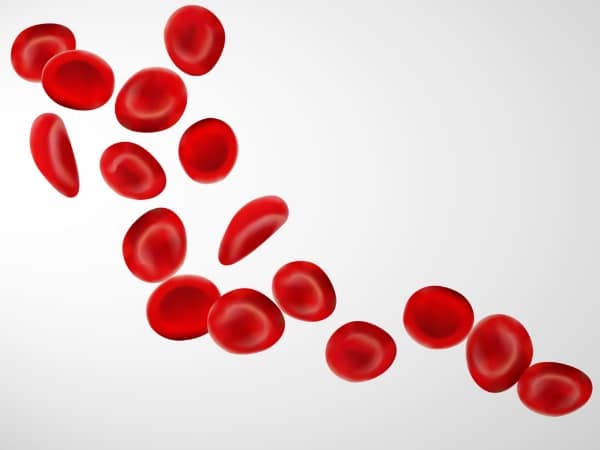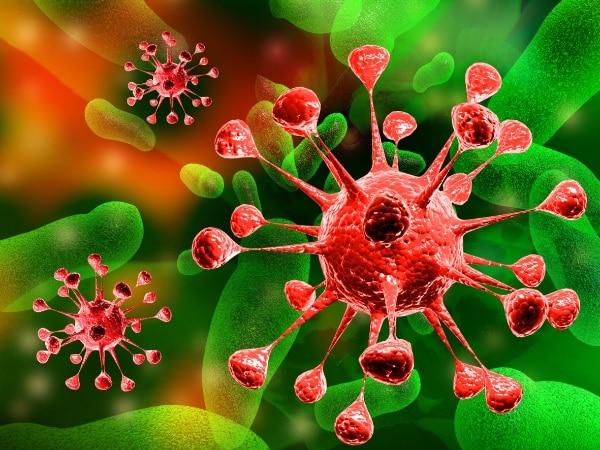How Can Bloodborne Pathogens Be Transmitted? [2023 Update]

Bloodborne pathogens are disease-causing microorganisms like bacteria or viruses carried in human blood and can have a long-lasting presence in the blood. These bloodborne pathogens cause bloodborne diseases like malaria, brucellosis, syphilis, Hepatitis B, Hepatitis C, and human immunodeficiency virus (HIV).
Although bloodborne pathogens are majorly transmitted through infected human blood, other potentially infectious body fluids like semen, amniotic fluid, and vaginal secretions exist. For the dangerous and most commonly transmitted bloodborne pathogens like HIV and HBV, other potentially infectious body fluids could be:
- Synovial fluid
- Cerebrospinal fluid
- Peritoneal fluid
- Pleural fluid
- Saliva in dental procedures
- Pericardial fluid
It’s important to note that some bodily fluids like urine and saliva do not carry bloodborne pathogens. However, they pose a significant risk if they are contaminated with blood. Any infected body fluids contact has the potential to transmit the pathogens. We also have a full length bloodborne pathogens safety training video that you should check out as well to further up your education on this topic.
Conditions Necessary For Infection To Happen
Bloodborne infectious diseases also follow the same chain of infection as any other disease. For an infection to happen, the following conditions must be present:
- A significant number of pathogens in the environment.
- A reservoir for the pathogens to thrive and multiply. In this case, it’s the infected blood.
- A transmission mode that carries the pathogens from the source to the host.
- A way through for the pathogens to enter the host.
- Susceptibility of the host to the pathogen.
When all the above conditions are fulfilled, then bloodborne infectious diseases can be easily transmitted from one person to the other.

What Are The 4 Ways Bloodborne Pathogens May Be Transmitted?
Infected Body Fluids Contact With Damaged Skin Or Mucous Membranes
Visibly contaminated with blood or any other body fluid on the list above can cause bloodborne pathogen transmissions if they come into contact with mucous membranes like those in your nose, eyes, and mouth. There is also a risk of infection when the infected bodily fluids are in contact with broken or damaged skin.
Life-threatening bloodborne diseases like HIV and HBV are the most commonly transmitted through this method. It is often referred to as direct contact, where the infected fluids touch the mucous membrane or the skin abrasion.
From A Mother To A Baby Before Or At Birth
Amniotic fluid is one of the other potentially infectious body fluids we discussed earlier. A mother can transmit hepatitis B or even HIV to a baby that is not yet born. That is mainly because the baby gets oxygen and nutrients from the mother’s blood while in the womb.
Also, the baby’s blood could mix with the mother’s during birth, infecting the baby with the virus. However, doctors have found solutions for HIV disease control from mother to child. It is possible to have the virus and not pass it on to the child during any pregnancy stage or at birth.

Sexual Contact
Sexual contact sharing is one of the most common ways of transmitting bloodborne pathogens because of the sexual fluids exchanged during sex. It remains one of the most prevalent transmission methods of bloodborne diseases like HIV and hepatitis B. If one person has the virus in a highly sexually active area, it will spread extremely fast.
Therefore, an effective disease control method for fatal sexually transmittable diseases like HIV is abstinence or practicing safe sex. Other bloodborne diseases like hepatitis C have a low risk of sexual transmission, but sex increases the potential for exposure. While you may not necessarily contract them through sexual intercourse, it is essential to be careful.
Parenteral Exposure
This kind of exposure involves introducing the virus to the body through accidental puncture of the skin with objects like contaminated needles, broken glass, and other sharps contact. Sharing hypodermic needles is also risky as it can easily facilitate the transmission of diseases like hepatitis C, B, and HIV.
The best way to avoid the parenteral ways of exposure is to maintain intact skin and avoid anything that could cause accidental puncture of the skin. Other body fluids already infected could also be risky around skin abrasion.

The Risk Factor In Different Transmission Methods
There is a different element of risk in each of the transmission methods we discussed above. Some have a high risk, others have a medium risk, while others have a very low risk. The highly risky transmission methods for bloodborne pathogens are parenteral exposure and sexual fluids exchange. That is almost a sure way of spreading the pathogens.
Absorption of blood and other body fluids through the mucous membranes also poses a risk but is not as high as the above methods. The direct contact of infected blood with an open cut also falls in the medium risk category. Even though you can get the virus through it, it is not as common as needle sharing and sexual engagement.
The low-risk transmission methods for bloodborne infectious diseases are the exposure of contaminated objects to skin abrasion, inflamed skin, or acne. However, it is vital to avoid any sharp objects coming close to any skin that is not intact.
Can Bloodborne Pathogens Be Transmitted Through Touch?
There is no particular situation in which intact skin poses a bloodborne pathogen transmission risk. Therefore, handshaking, hugging, or any other form of touching cannot transmit these pathogens. There must be an entryway for the pathogens to move into the host, usually through an opening on the skin or body fluid contact.
Closing Thoughts
Bloodborne infectious diseases are deadly and easy to contract when the chain of infection is complete. With all the above knowledge, you can take precautions by practicing safe sex, keeping your skin intact, using gloves and other forms of protection when handling sharp objects, like during first aid.
There is a degree of risk in every transmission method for bloodborne pathogens. While some have a low risk, others have an extremely high one. However, that does not mean any of the listed methods cannot spread the pathogens. You should also be careful around the bodily fluids we mentioned when you have an open wound. If you are wanting to educate your employees on this topic, you should check out our bloodborne pathogens toolbox talk as well. That will discuss this topic in a safety meeting format that is good for employees.